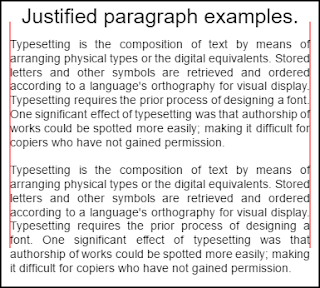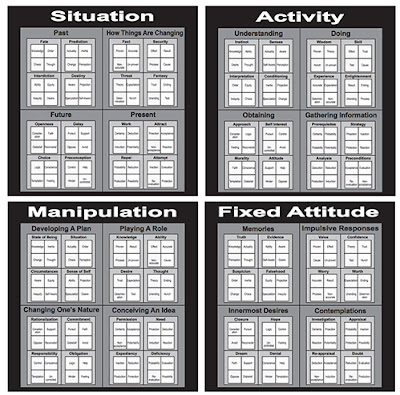In the Spring of 2006, I went to Vail, Colorado for my own personal writer’s conference with the Lord, instead of going to the BYU writer’s conference again. I stayed in a nice hotel and was able to study full-time without interruptions for a few days. I have much gratitude to Sherm for making these retreats possible.
This post is part 3 of "I Have a Tale to Tell"
While I was there I continued studying, writing, and conversing with the Lord. When I got stuck and didn’t know what to do, I went to a different place in the room and prayed. As I studied, I could sense Him in my mind, like he was remotely logged in. He was guiding me, answering my questions, and asking me questions.
Three Major Things Happened
I remember three major things happening on this visit to Vail. The first was our study of the word Justification.
I was looking at this semantic concept because Dramatica had a giant definition of it that really caused me to think deeply.
The scriptures also spoke of Justification through the Atonement of Jesus Christ so I wanted to compare and contrast the way Dramatica was defining it with the way the scriptures defined it.
I realized that I also had a preconceived definition associated with the word justify. I predominantly saw its negative meaning: When someone tries to justify herself for her failures and makes up excuses for her poor choices instead of admitting them and seeking to improve. I did not want to be that way so I often swung to the other side of the pendulum to evaluate and confess my responsibility in every failure.
But then I asked the Lord what he did with his Justification. He showed me that he justified people by first looking at the reasons for their failures objectively and empathetically. Rarely was a single person completely responsible for their failures. It was important to investigate the other causes that were involved. When those causes are identified the resolution process becomes apparent. And it was his job to be involved in that resolution process, which then brought a person closer to him.
He showed me the justification of margins in my mind. In this first image, you can see the margins on the left are Imbalanced. They are not even. That was like some of the ways I used to deal with my relationship problems.In this second image, the margins have been justified. I knew in an instant what it is now taking me a few paragraphs to explain. So, part of his Justification process is to retrain us. He was doing this with me. He was showing me the facts and then letting me decide what I would do with them. I chose to apply them to my life, which incrementally balanced me out. It gave me better relationship skills. It taught me how to evaluate my failures in a more productive way. It taught me how I wasn't defined by my failures. They were separate from me, or at least they could be separated from me so that I could increase my balance.
I Know Where Beauty Lives
I know where beauty lives. Understanding the semantics behind Justification helped me know who he is and where he stands. As I understood this about him, I physically felt a tight knot inside me release. This was the way that he saw me and everyone else. He resided and presided here. He taught me to evaluate myself and others from this perspective. He showed me that he gives me, my kids, my husband, my family members, and my community members time to make mistakes, experience consequences, learn from them, and grow. He understands we all need time to get it right. In his mercy, he allows for this space and time.
He consistently repeated this training process over the next several years of my life using other semantic concepts. Through this process, he was slowly but surely freeing me from a bondage I had not fully understood that I was in. And oh my God! (literally) He was so beautiful! Seeing him like this was the delight of my entire existence!
The Second Crucial Thing
The second crucial thing I remember working out with him during this time in Vail was about my kids. And let me tell you the backstory first. I sometimes thought about the possibility of one of my kids dying in an accident or by disease. I would walk through that possibility, envision it, and cry my eyes out. I did not want them to die. I had heard of many stories of other children dying – getting stuck in the trunk of a car, getting trapped under a garage door, drowning, cancer, etc. These stories always broke my heart. I wanted to protect my kids. I didn’t want them to get hurt. I didn’t want them to suffer. It was intensely painful.
So, in Vail, the Lord asked me to give up the fate of my children to him. He wasn’t saying he was going to take them. It was that he knew that was the one thing I was holding back from him. I held on to it with all my might in total fear. He wanted me to let go of the fear and trust him with the lives of my children, whether they lived long or short lives, whether they had to deal with sorrow or joy. He was trying to tell me that they would be okay – he would make sure of that, regardless of physical life or death.
This conversation came up because I was asking to come closer to Him. I had told him that I didn’t want to hold anything back. I wanted to give him all of me. So, I went through one of my first leaps of faith. I mustered my courage to let go and trust him. I made this commitment. It took me time to actually stop the fearful thought processes and to develop my faith. It still is a little scary for me, but each time it comes to my mind, I just turn to him and give it to him.
The Third Crucial Thing
The third major change that I made during this stay in Vail was the direction of my writing. I had started studying and training with him to achieve the goal of writing a fiction story that would eventually be published.
I came to a point where I said, “I’m making very little progress towards finishing my story. I’m spending so much time on writing about the structure of story that there is no time left to actually write my story.”
The last morning in Vail, I was in the shower and he had logged in remotely again. I was thinking about the above conundrum when he answered me. His words were very clear, “Which would you rather do – write your story or keep learning about the structure of story? Writing your story will be a shorter and easier journey. So, you can put down your studies and do that. Or you can take the much longer and harder journey (I pictured a mountain path) and continue focusing on writing about the structure of story. There was no force or guilting me into doing one or the other. He merely was presenting the choice to me and was asking me to decide.
There was no question in my mind. I wanted the longer, harder journey. This place that he was taking me was so amazingly beautiful. I had to keep going. Once I made the choice, I sensed that’s what he wanted too.
So, I made the commitment to put my fiction story aside and focus on writing about what he was showing me.
To be continued...HERE
















